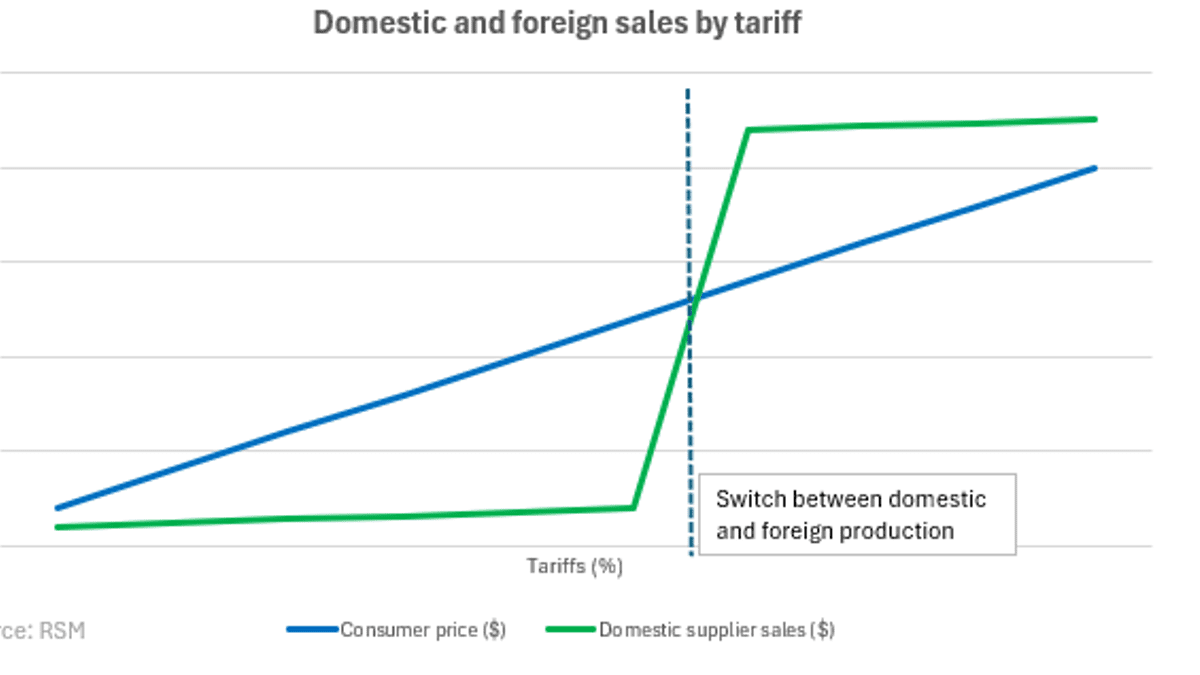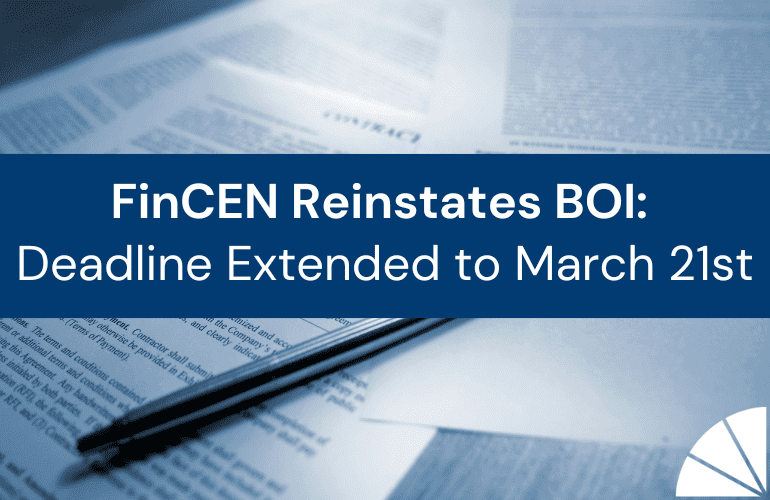
Authored by RSM US LLP
Raising tariffs can drive up consumer prices, lower demand and hurt business profitability. Unless market forces are considered when employing tariffs, these negatives may occur without also achieving the desired benefit of a shift from foreign to domestic production.
As tariffs rise, imported goods often become more expensive, prompting consumer businesses to seek the lowest-cost supplier. A switch to domestic production occurs only if tariffs make domestic goods the cheapest option. Otherwise, tariffs simply increase costs, reduce supply choices and impose higher taxes without compelling a production shift.
Tariff dynamics
Consider the following chart that narrows in on these dynamics, where the dotted line represents the point of change from foreign supplier to domestic supplier. On the left side of the dotted line, the domestic sales revenue of a product is low until tariffs are raised high enough to make the domestic supplier the cheapest option, at which point domestic suppliers benefit. However, until that shift occurs, the net consumer price increases along with tariffs without the resulting benefit of domestic production.
Similarly, a Tax Foundation study of the tariffs that George W. Bush’s administration imposed in 2002 on imported steel showed that higher tariffs led to increased consumer prices and lower demand, causing job losses in industries that rely on those goods. If tariffs fail to shift sourcing to domestic suppliers, they reduce demand and limit consumer access to products without boosting domestic production and jobs.
Additionally, when input costs are higher due to tariffs, regardless of the tariff level, domestic manufacturers must sell their products at a higher price to maintain their margins. This results in reduced exports due to selling a now more expensive product compared to foreign competitors who do not have to pay those tariffs.
Tariff complexities
Even when tariffs are increased, targeting specific countries, unless the tariffs result in the domestic price being the cheapest price, businesses may find that switching to a different but still foreign producer is their most affordable option.
Additionally, the price differences between domestic and foreign producers vary depending on the product. Therefore, the same percentage tariff on all products may result in a switch to domestic production for some products, but for others, only an increased price passed on to consumers.
China offers unit values lower than the cheapest non-China alternative for about 45% of the product categories that the U.S. imports from China, according to the Federal Reserve Bank of St. Louis.
Importantly, quality and feature differences within product categories mean that the cheapest products are not always chosen, as products are not always directly comparable. Oftentimes, there is a mixture of foreign and domestically produced products sold at the same time, leaving customers to determine the value to place on certain features. This means that tariffs do not always have the intended effect.
A 2019 study by the National Bureau of Economic Research found that in response to 2018 tariffs on washing machines, in nearly all source countries, the price rose by nearly 12%. Interestingly, the price of U.S.-produced washing machines also went up, along with the price of dryers, which were not included in the tariff. While the increased domestic production resulted in roughly 1,800 more jobs, the higher product prices cost consumers $1.5 billion more. The net result is that consumers paid $815,000 per job created.
The takeaway
Consumer businesses should diversify their supply chains to ensure they can purchase products from the lowest-cost providers and weather cost increases caused by tariffs on specific countries. Higher tariffs raise costs regardless of the supplier. To maintain profitability, businesses must improve efficiency and, where possible, pass costs to customers by adjusting prices across products, including those unaffected by tariff increases, to meet demand and market share. In addition, businesses should leverage innovation and technology to enhance product quality and features, while also offering options to fit different budgets.
For more insights on tariffs, read: How an escalating trade war will affect global growth, inflation and employment.
This article was written by Peter Ramer and originally appeared on 2025-02-14. Reprinted with permission from RSM US LLP.
© 2024 RSM US LLP. All rights reserved. https://realeconomy.rsmus.com/the-impact-of-tariffs-balancing-costs-supply-chain-and-profitability/
RSM US LLP is a limited liability partnership and the U.S. member firm of RSM International, a global network of independent assurance, tax and consulting firms. The member firms of RSM International collaborate to provide services to global clients, but are separate and distinct legal entities that cannot obligate each other. Each member firm is responsible only for its own acts and omissions, and not those of any other party. Visit rsmus.com/about for more information regarding RSM US LLP and RSM International.







